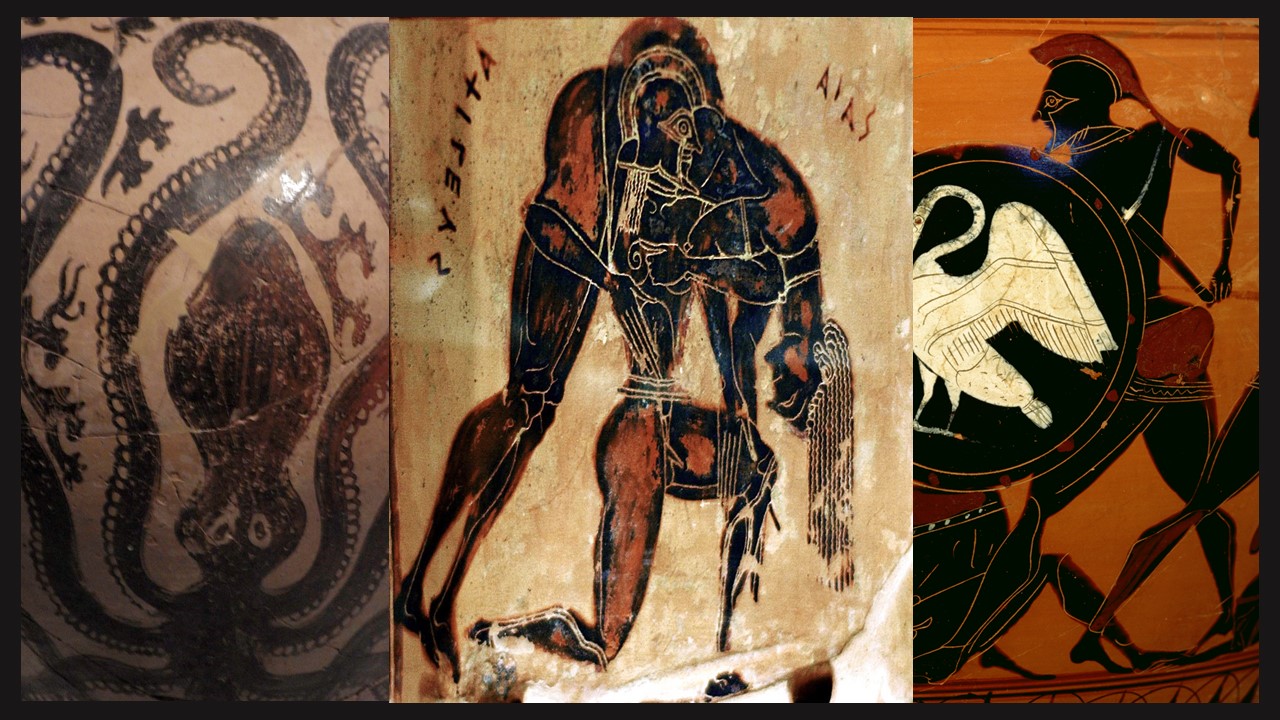
Learning from Ancient Greek Pottery Activity will introduce you to the 5 STEPS involved in exploring a work of art: Careful Observation, Analysis, Research, Interpretation, and Critique.
This project was inspired by the Learning to Look method created by the Hood Museum of Art, as seen in https://hoodmuseum.dartmouth.edu/learn/k-12-educators/educator-resources/learning-to-look/european-art
Step 1. Careful Observation – Students are asked to focus on the work of art projected on the screen. They are asked to look carefully and describe everything they see. The process should start with broad, open-ended questions like
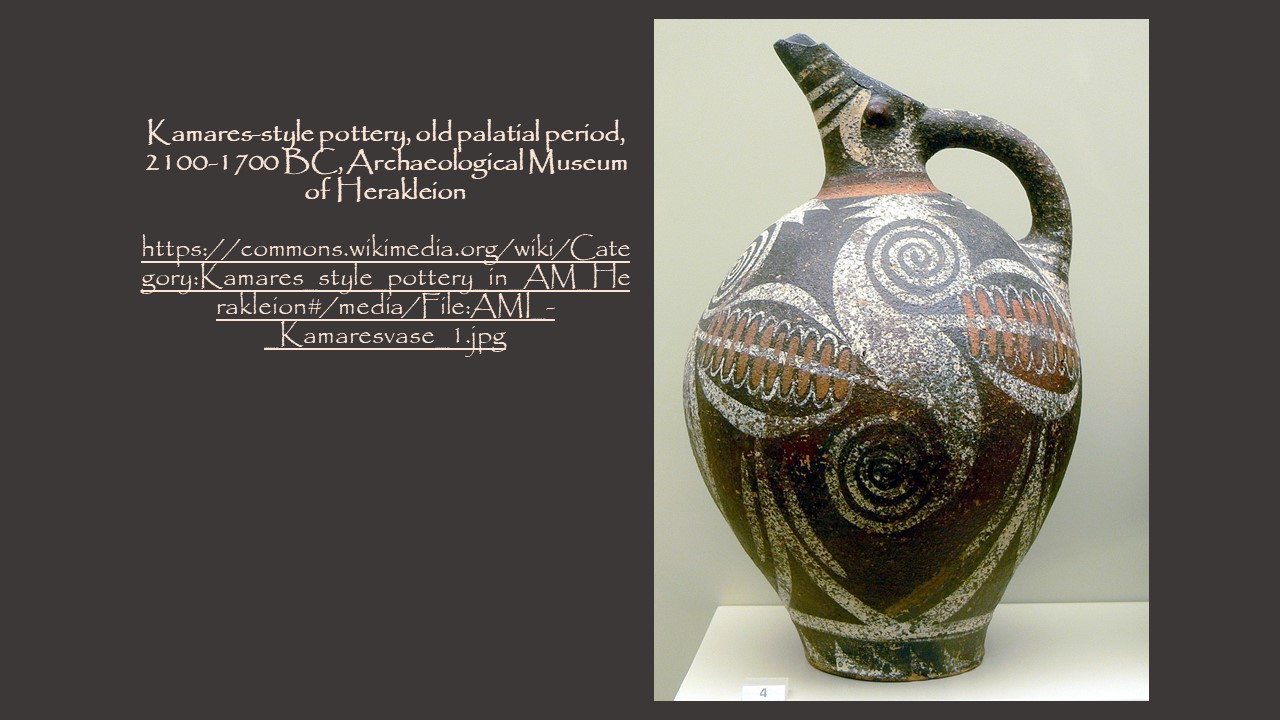
What do you notice when you first look at the Minoan Pot? What else do you notice?
Questions should become more and more specific, such as:
Describe the pot’s shape. Where are its handles? Where is the wider part of the pot? Where is the narrower part? Is it symmetrical or asymmetrical? How is the pot decorated? What colours do you see? What patterns?
Step 2. Analysis – Students are asked to answer simple analytic questions that will deepen their understanding of the Ancient Greek Geometric Style Pot on view.
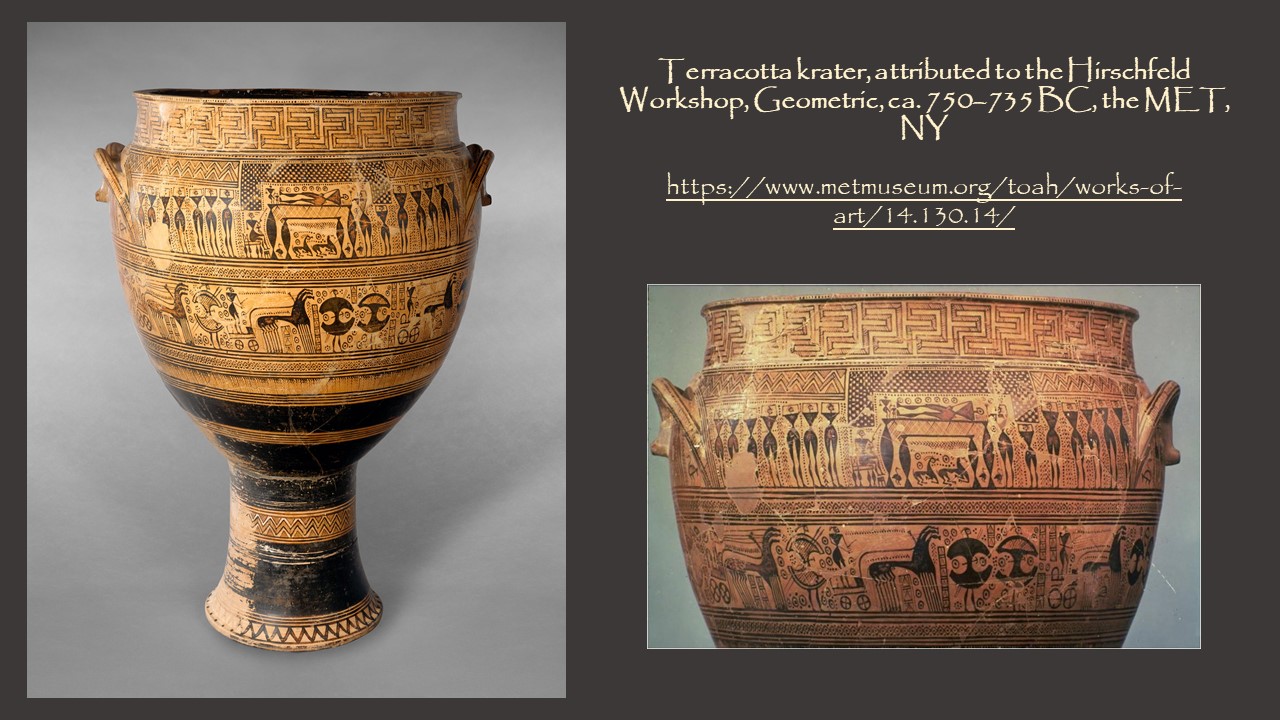
What might the figures on the top register of the pot be doing? How are the figures represented? Who might the figure on the top register and the centre of the vase be? Is it male or female? How is this figure different from the figures on the other side? What does the information the artist provided suggest about the identity of this figure? What might this pot have been used for? What clues can you get from its decoration? After each response, students are advised to always ask, “How do I know?” or “How can I tell?” so that they will look to the work of art for visual evidence to support their answers.
Step 3. Research – The teacher is asked to provide information on all discussed Ancient Greek Pots. Students should be given time to read and further research each pot. At the end of the research period, the teacher should be available to answer questions and further enhance student query.
Kamares is a favourite Minoan Pottery style for many Greek Bronze Age lovers. Done on the potter’s wheel and decorated with colourful abstract patterns, Kamares Ware is probably the most famous and admired Minoan pots. https://www.khanacademy.org/humanities/ancient-art-civilizations/aegean-art1/minoan/a/kamares-ware-jug
The Ancient Greek Geometric Period (1100-800 BC) is characterized by monumental grave markers in the form of large vases decorated with geometricized patterns and motifs, funerary representations and burial rituals. These Geometric period vases are among the finest examples of ancient Greek pottery. https://www.metmuseum.org/toah/works-of-art/14.130.14/
The François Vase is a unique example of ancient Greek pottery. An Attic Volute Krater, decorated in the black-figure style, dated about 570/560 BC, the François Vase was signed by its makers, “Ergotimos mepoiesen” and “Kleitias megraphsen”, meaning “Ergotimos made me” and “Kleitias painted me”. The vase presents over 200 mythological figures, many identified by inscriptions, representing a number of mythological stories. https://www.florenceinferno.com/the-francois-vase/
Made in Athens around 515 BC, the Euphronios Krater is a unique work of art. Signed by both the potter and the painter, the Krater is decorated with a Trojan War scene: the death of Sarpedon, son of Zeus. https://smarthistory.org/euphronios-krater/
Step 4. Interpretation – How to put together the Research, Analysis, and Observation students have done so far and reach a better understanding of the art object in focus. The truth is that there are no outright or wrong answers. The work students have done so far helps them better understand, and thus interpret the meaning of a work of art.
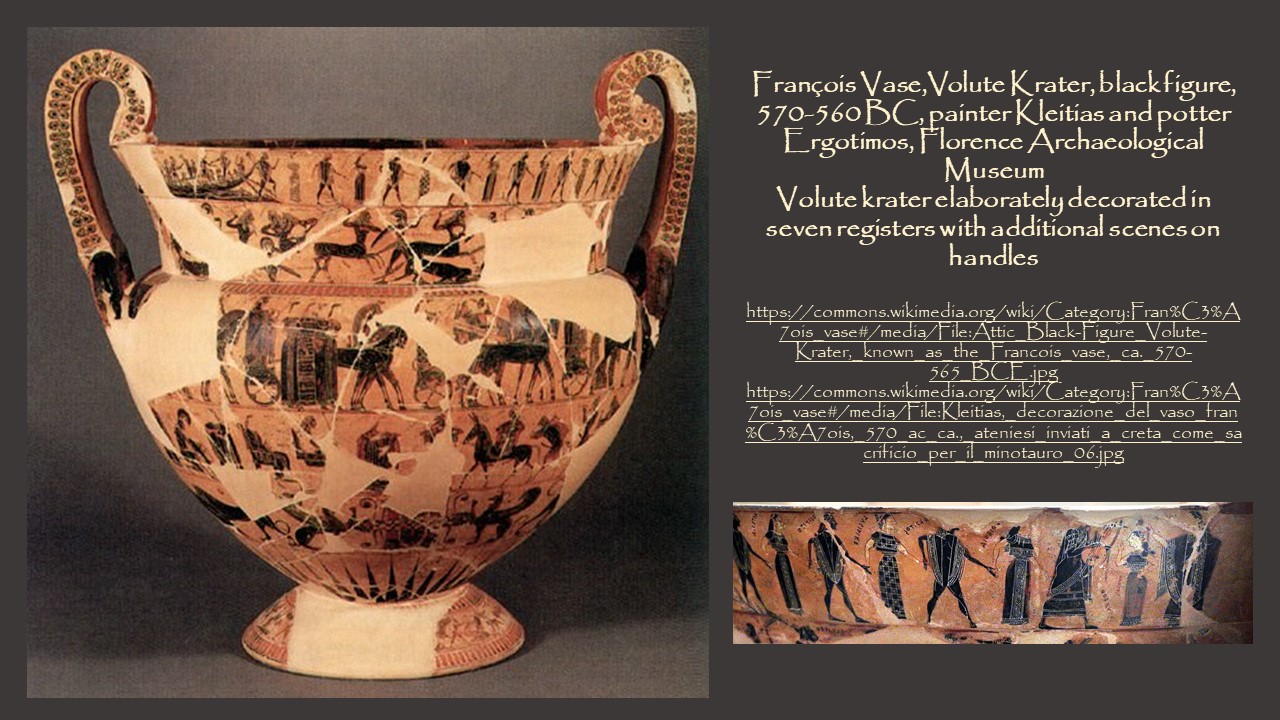
Some basic interpretation questions for this object might be: What does the size and elaborate decoration with 200 figures, many with identifying inscriptions, representing a number of mythological themes, tell us about the ways in which the ancient Greeks valued mythology? The Vase bears the inscriptions “Ergotimos mepoiesen” and “Kleitias megraphsen”, meaning “Ergotimos made me” and “Kleitias painted me”. What do the inscriptions tell us about the role of artists/craftsmen during antiquity?
Step 5. Critical Assessment and Response – It’s time to JUDGE how successful the work of art in focus is! This is an important part of the Learning Process and students are asked to answer the provided questions supporting their opinions based on their work is done so far. “Critical assessment involves questions of value.” For example:
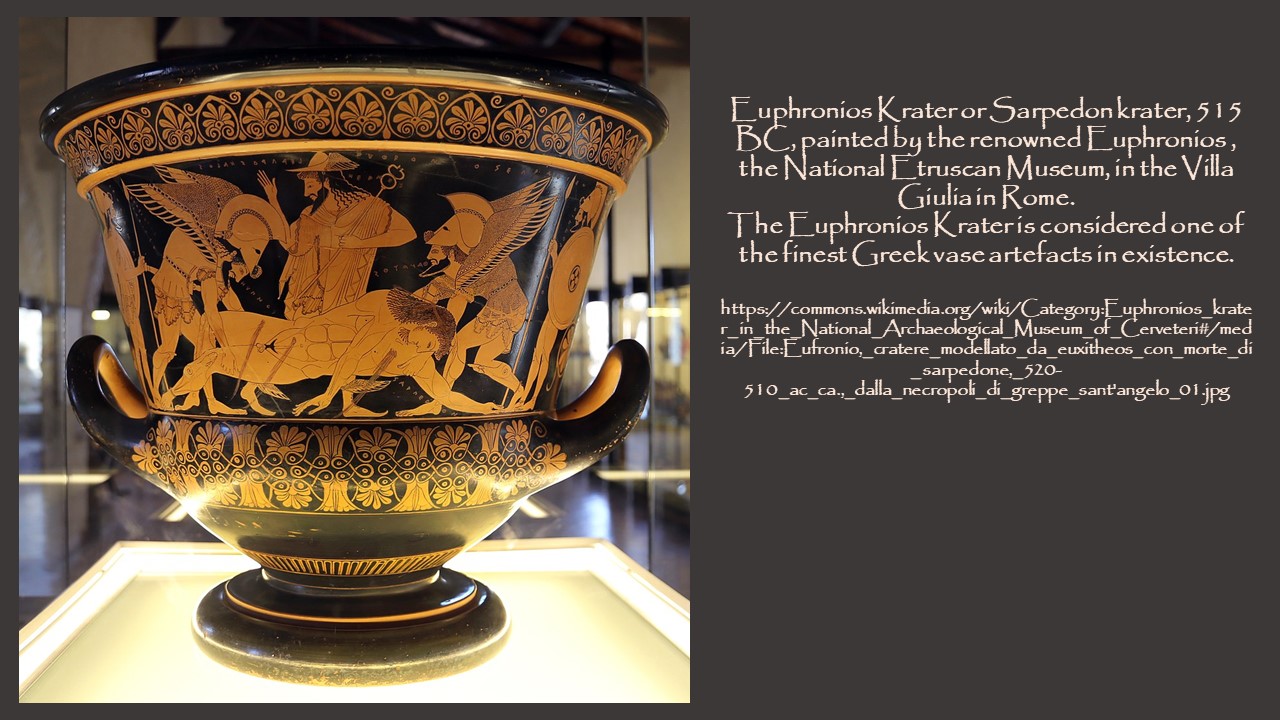
Do you think this amphora is successful and well done? Why or why not? Do you like this work of art? How does it relate to your life and your culture?
For a PowerPoint on Learning from Ancient Greek Pottery… Click HERE!
For a student-friendly Activity Worksheet on Learning from Ancient Greek Pottery... Click HERE!